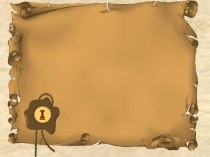- Главная
- Разное
- Бизнес и предпринимательство
- Образование
- Развлечения
- Государство
- Спорт
- Графика
- Культурология
- Еда и кулинария
- Лингвистика
- Религиоведение
- Черчение
- Физкультура
- ИЗО
- Психология
- Социология
- Английский язык
- Астрономия
- Алгебра
- Биология
- География
- Геометрия
- Детские презентации
- Информатика
- История
- Литература
- Маркетинг
- Математика
- Медицина
- Менеджмент
- Музыка
- МХК
- Немецкий язык
- ОБЖ
- Обществознание
- Окружающий мир
- Педагогика
- Русский язык
- Технология
- Физика
- Философия
- Химия
- Шаблоны, картинки для презентаций
- Экология
- Экономика
- Юриспруденция
Что такое findslide.org?
FindSlide.org - это сайт презентаций, докладов, шаблонов в формате PowerPoint.
Обратная связь
Email: Нажмите что бы посмотреть
Презентация на тему Экскурсия на корабль переселенцев в Новый свет Данброди
Содержание
Historical Information Dunbrody is a 458 tonne three-masted barque, 176 feet (53.7 metres) long. Her hull length is 120 ft. (36.6 m), she has a beam of 28 ft (8.5 m), a draft of 11.5
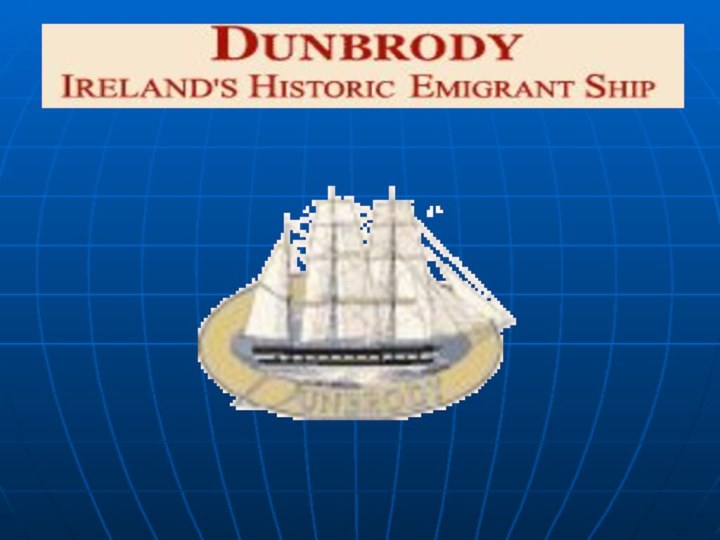
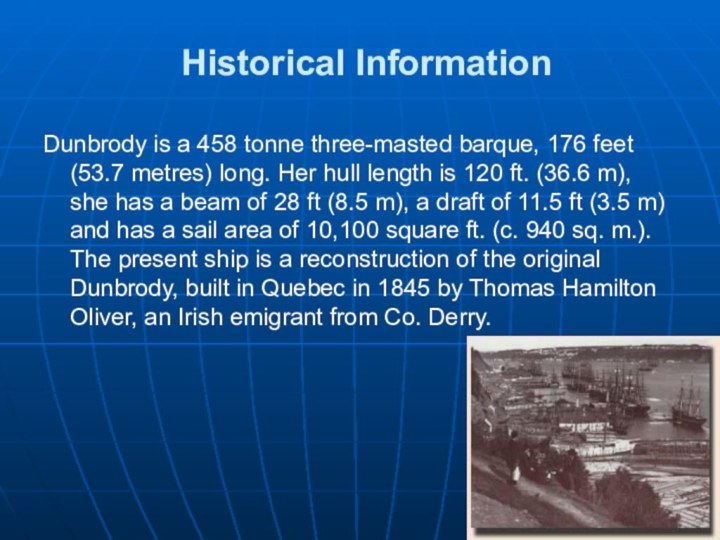

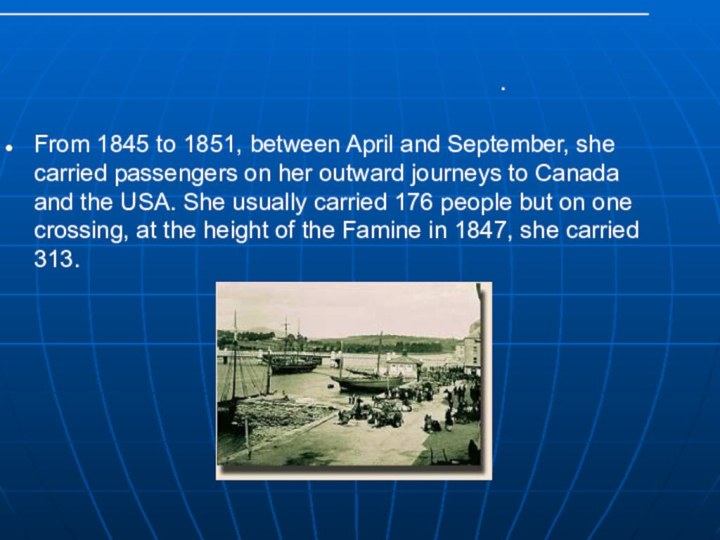
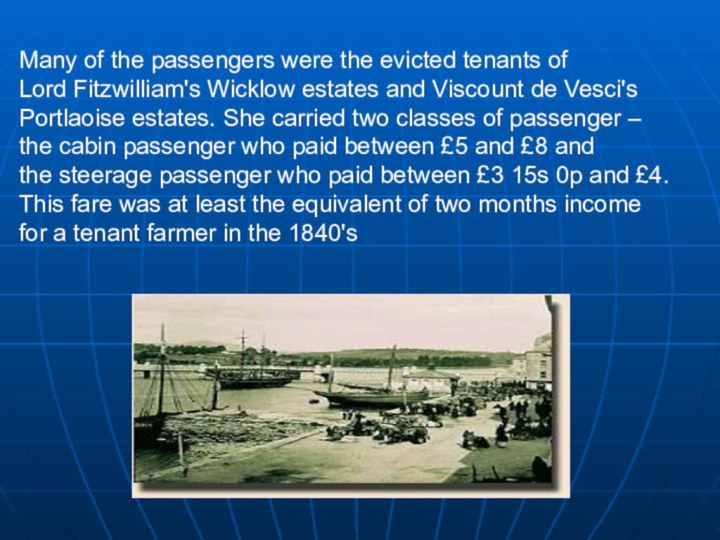


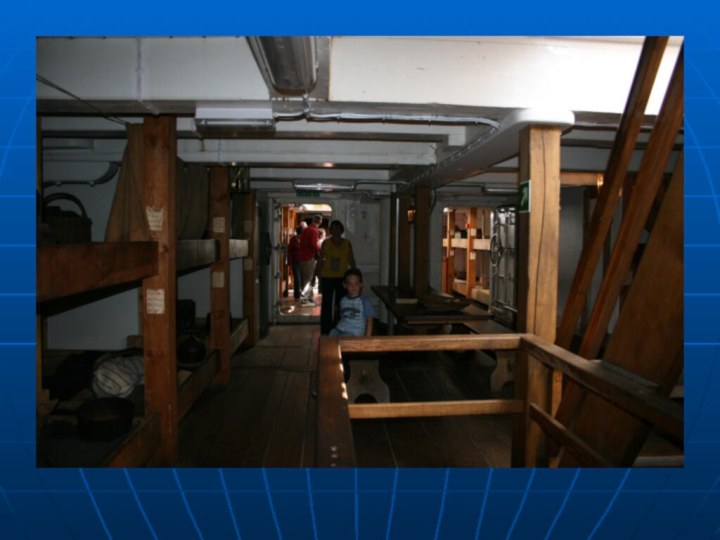

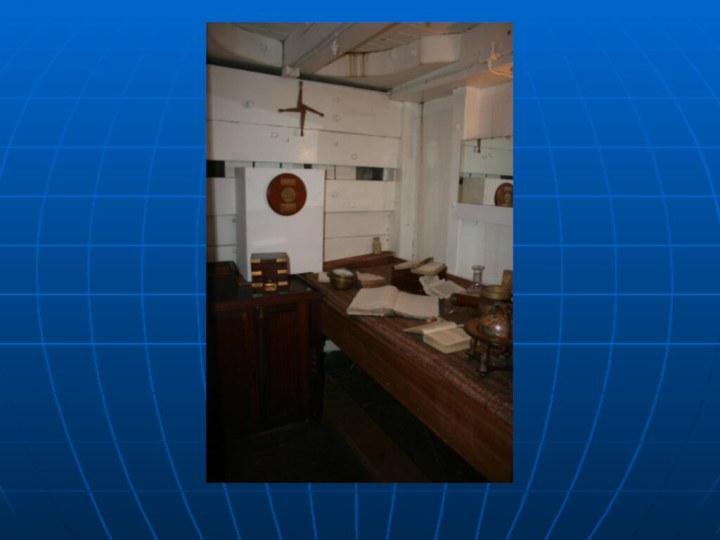
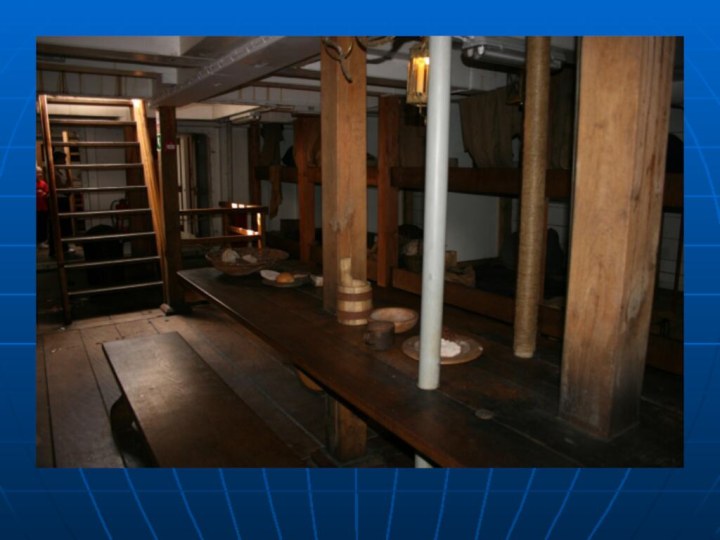
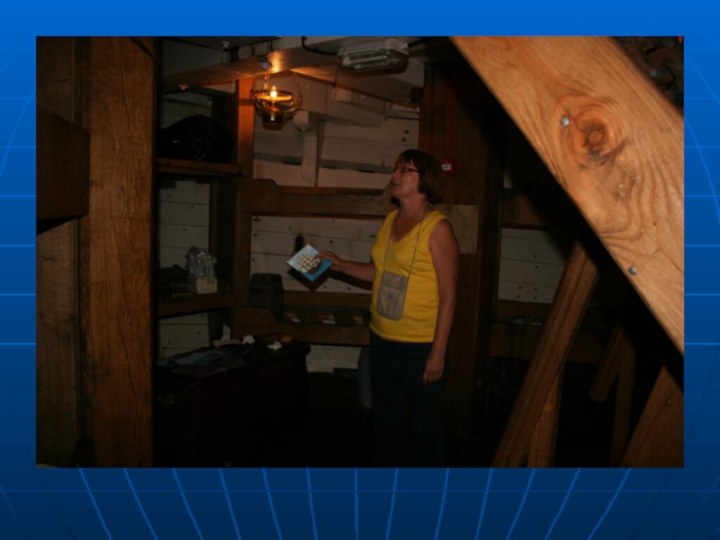

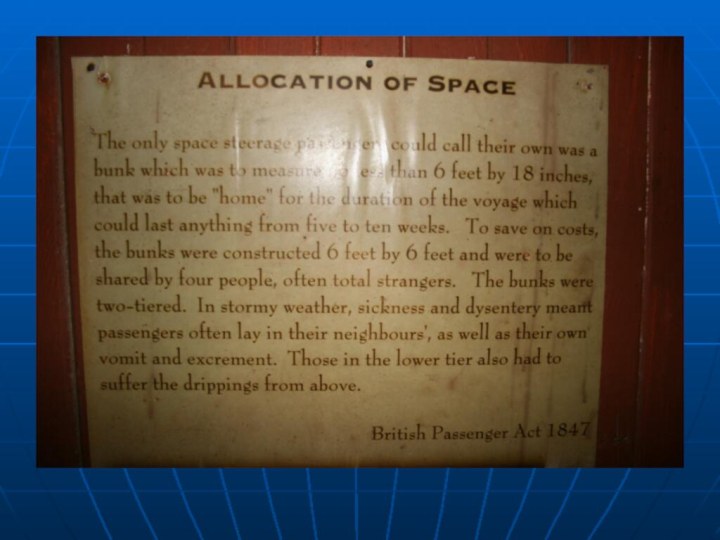
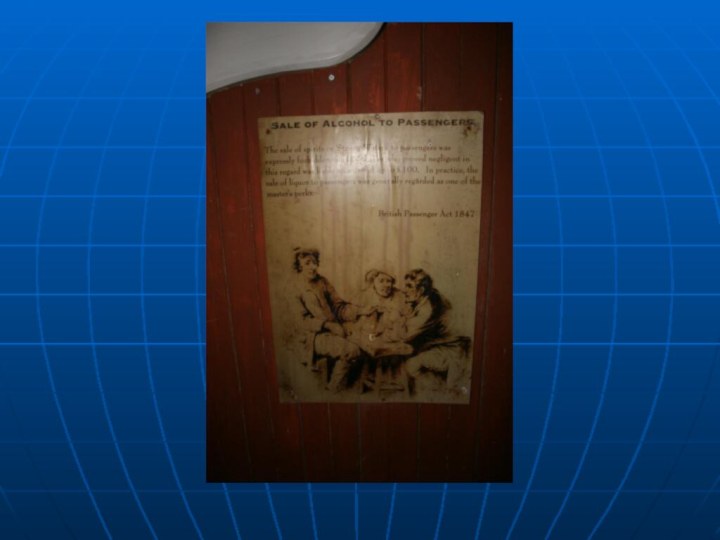
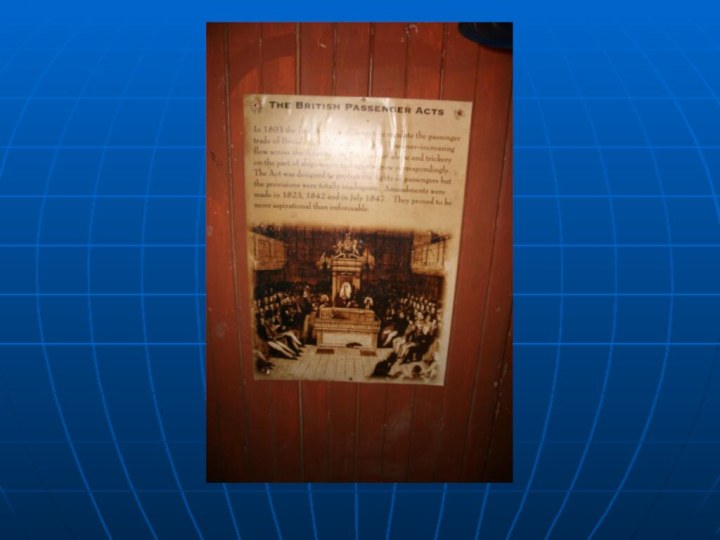

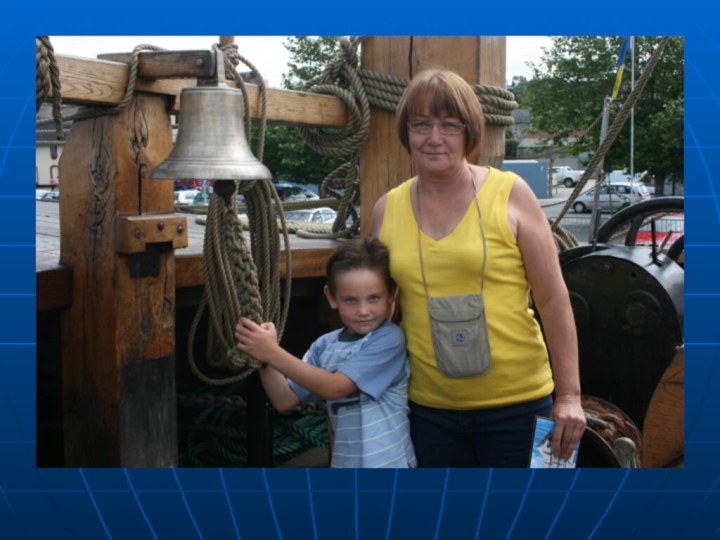
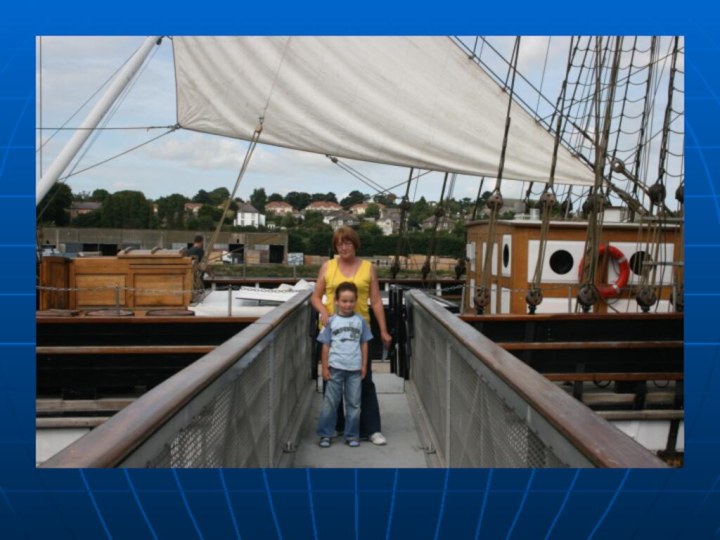

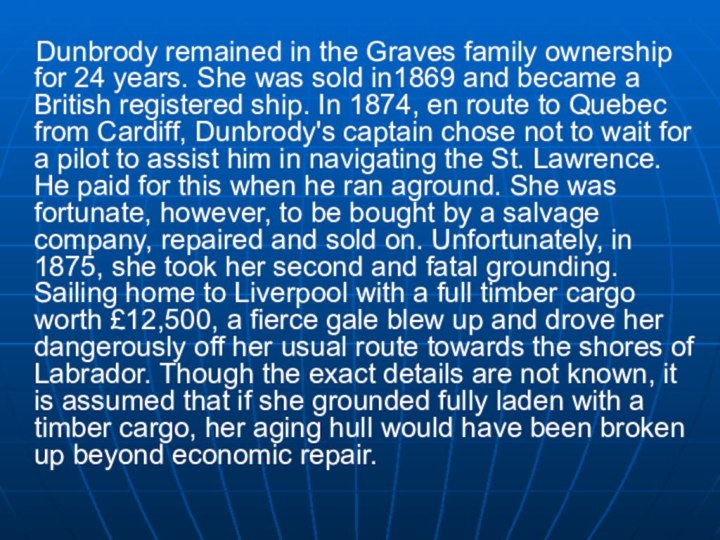
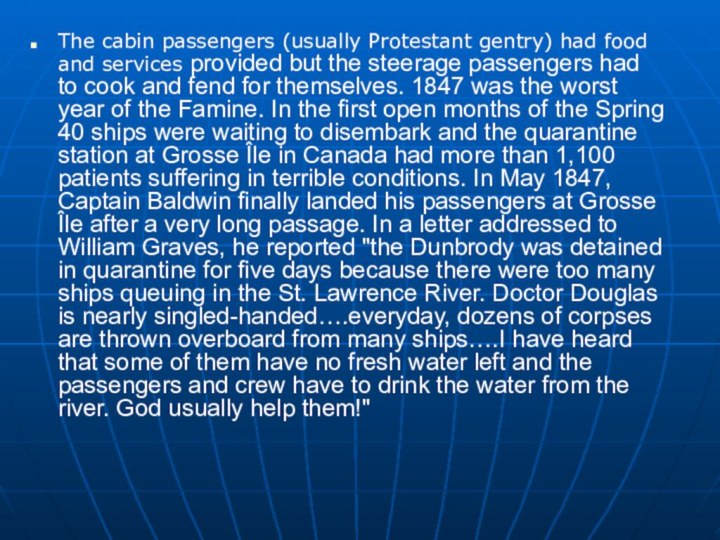
Слайд 3 The original Dunbrody was a three-masted barque built
in Quebec, Canada, for the Graves family of New
Ross, Co. Wexford in 1845. She carried many emigrants to the new world from 1845-1870. The Dunbrody Project involves the construction of a full scale sea-going replica. The Dunbrody was finished in early 2001 and has been opened to visitors since 1st May 2001 at the quayside in New Ross.
Слайд 4
From 1845 to 1851, between April and September,
she carried passengers on her outward journeys to Canada
and the USA. She usually carried 176 people but on one crossing, at the height of the Famine in 1847, she carried 313.Слайд 5 Many of the passengers were the evicted tenants
of
Lord Fitzwilliam's Wicklow estates and Viscount de Vesci's
Portlaoise
estates. She carried two classes of passenger – the cabin passenger who paid between £5 and £8 and
the steerage passenger who paid between £3 15s 0p and £4.
This fare was at least the equivalent of two months income
for a tenant farmer in the 1840's







